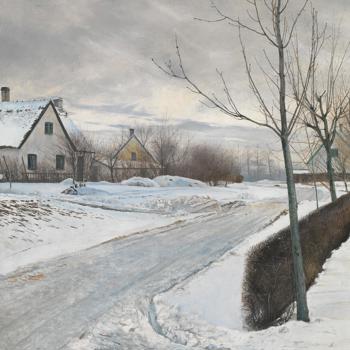Born in 1854, in the village of Ring, in Southern Zealand, Denmark (from where he took his name), Laurits Andersen Ring trained at the Royal Danish Academy of Fine Arts in Copenhagen.
After travels abroad, including a two-year stay in Italy, he returned to Denmark. There his art, both landscape and figure painting, increasingly addressed themes of peasant and traditional rural activities at a moment when this way of life was beginning to fade away. Copenhagen and its surrounding countryside were also favourite motifs of his contemporary and friend Vilhelm Hammershøi, who, like Ring, often depicted scenes empty of people.
In the decades following the so-called Danish Golden Age, Ring became one of the leading artists in his native country. His art is indebted to Symbolism while frequently conveying themes of social realism.
In 1907 his paintings were shown for the first time in London in an exhibition of Danish art held at the Guildhall Art Gallery. An austere, almost monochromatic winter scene, Road in the Village of Baldersbrønde (Winter Day), was completed just in time to be sent to New York in 1912, to be included in an exhibition of contemporary Scandinavian art which toured America that year and the next, and proved hugely influential.
Laurits Andersen Ring died in 1933, aged 79, in Roskilde, west of Copenhagen.

